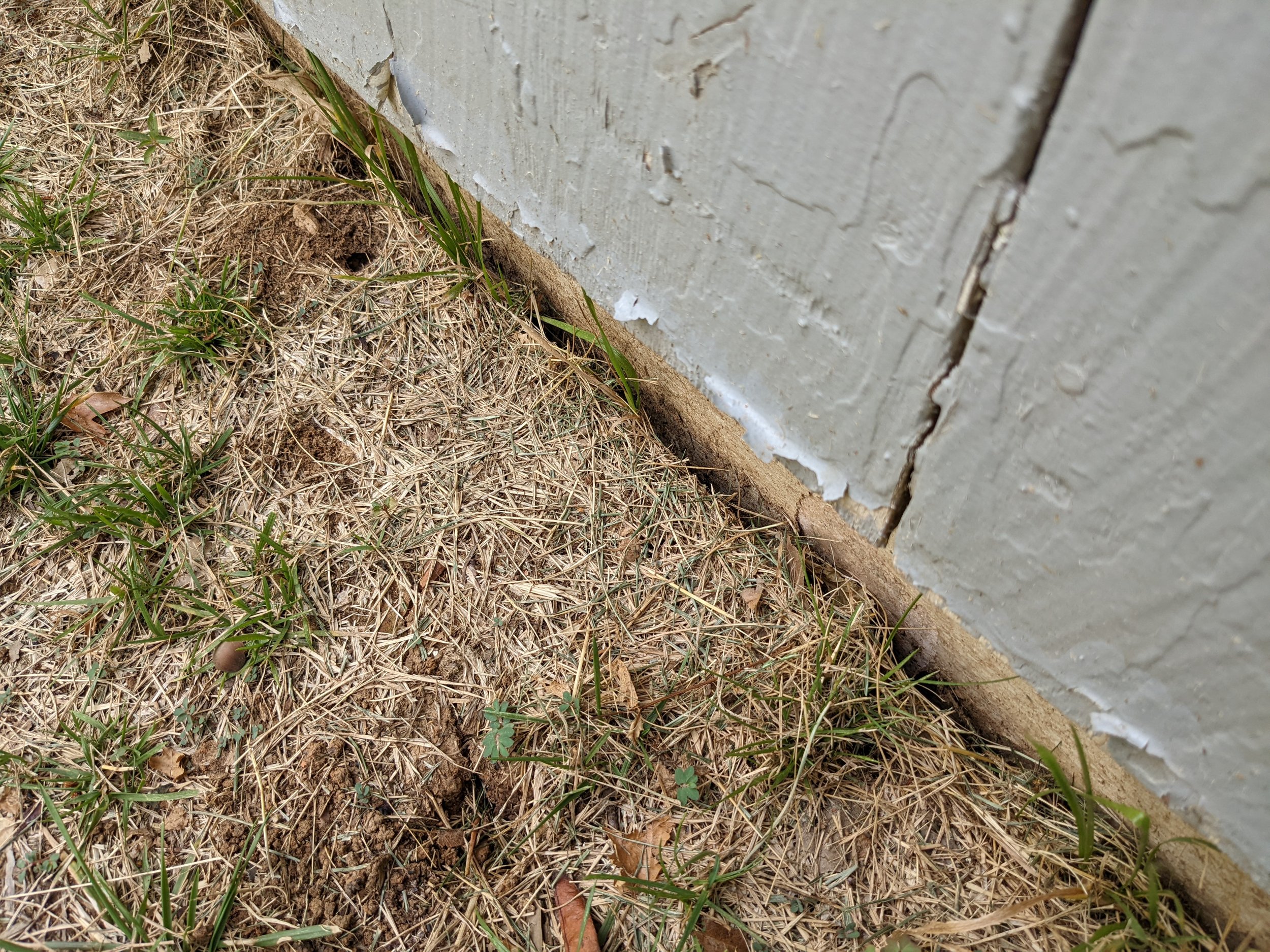Watering Your Foundation During Summer Heat
When it comes to managing water near your home’s foundation, there is a balance to strike. We’ve already covered why you don’t want too much water around your foundation, as well as a couple of key strategies (i.e. gutters and grade) to avoid that. But you don’t want the soil around your foundation to be too dry, either. That’s the topic of this article.
Expansive Clay Soil Causes Problems During Times of Drought
If you’ve read more than one of my articles, you may be getting tired of hearing about the expansive clay soil that is common in the Kansas City area. But this soil—namely, its behavior in response to changes in moisture content—is the underlying cause of many (or even most) foundation problems here in Kansas City. If we are going to talk about why you don’t want the soil around your foundation to get too dry, we have to start with the expansive clay soil.
As a quick refresher, expansive clay soil expands when it gets wet and shrinks when it dries. In fact, it is sometimes called “shrink–swell soil.” When the soil gets wet and expands, the weight of the water and the expansion of the soil can exert a tremendous amount of force on your foundation, which can cause your foundation to push inward or heave upward (you can read more about this here and here).
In very dry conditions, shrinking soil can pull away from your foundation, potentially causing several problems. First, where soil has pulled away from a foundation, it leaves a void to be filled with water during the next heavy rain. This water can exert significant pressure on the foundation walls, increasing the risk of lateral movement. Second, shrinking soil can create voids under the foundation footings, which can lead to settlement. And third, as soil pulls away, the resistant force (e.g., friction) exerted by the soil on the foundation walls is reduced, which increases the freedom of movement of the walls. In other words, as soil pulls away, it becomes easier for the walls to move through the soil.
Unfortunately, this is somewhat of a self-propagating cycle. As soil shrinks and pulls away, more soil is exposed to airflow, which allows more soil to dry and shrink. Additional factors can exacerbate the effects. For example, during times of extreme drought, the roots of large trees can pull moisture out of the soil, causing the soil to shrink and the associated issues described above. This doesn’t mean you should remove large trees; it just means you may need to water them (more on this below).
Signs the Soil Around Your Foundation is Too Dry
How do you know if the soil around your foundation is too dry? If there has been a stretch of very hot and dry weather, and you have done no supplemental watering, there is a good chance the soil around your foundation is too dry. Visual indicators include large cracks in your yard, and, in extreme instances, soil visibly pulling away from your home’s foundation (see pictures below).
Proactive (or Reactive) Water Management Strategies
If you have not been watering the soil around your foundation, or if you see any of the dryness indicators described above, don’t panic. If you have not yet observed foundation cracking or other signs of foundation movement, you can rehydrate the soil with the watering strategies described below. The soil will slowly expand, thus reducing or even eliminating voids around your foundation. If you have observed cracking or other signs of foundation movement, you should engage a professional engineer to perform a structural inspection of your foundation and recommend a course of action. In some instances, you may be able to stop—or even reverse, to some degree—settlement by rehydrating the soil. This is because rehydrating clay soil will cause it to expand, which in turn can move your foundation back towards its original position. So before you undertake costly repairs, such as underpinning your foundation with piers, it is a good idea to obtain an independent assessment by a professional engineer—you may just need a water management strategy.
Without further ado, let’s discuss strategies for proactively (or perhaps reactively) managing water around your foundation to avoid overly dry and shrinking soil. During hot and dry weather patterns, the soil around your foundation should be watered with the equivalent of one to two inches of rainfall per week. During times of extremely hot and dry weather, you should also consider watering large trees near your foundation. Otherwise, these trees will seek out water near your foundation. When you water large trees, rotate your water source so that you deliver water on all sides of the tree trunks. This may not be necessary for the health of the trees, because they may find the water they need, but they may do so at the expense of your foundation.
There are a few different ways you can provide water to your foundation. If you already have a sprinkler system that waters the area near your foundation, this can be an easy solution. But before taking a “set it and forget it” approach, watch your sprinkler system in action. If your sprinkler system is watering very unevenly, with some areas getting too much water and some areas getting too little water, or if your sprinkler system is not reaching the area near your foundation, a different approach may be needed. Another possible solution is a soaker hose (a round hose with many tiny holes that slowly seeps water into the ground, not a flat hose that sprays water into the air). These hoses tend to distribute water more evenly than a sprinkler system, but you need to be careful not to deliver too much water directly adjacent to your home’s foundation. If you use a soaker hose, it can be placed around the perimeter of your home, within a few feet of your foundation. Do not place the hose directly adjacent to the foundation, and if you are already seeing soil pull away from your foundation, you may need to place the hose even further away from the foundation, because as discussed above, water can flow into those voids and exert significant pressure on your foundation walls. A drip irrigation system is another potential solution for watering your foundation.
Whatever water delivery method you choose, remember that you are going for a slow soak, not puddles with a garden hose. If you’re seeing puddles near your foundation, then you need to adjust your water delivery method.
If you have specific questions or would like watering guidance tailored to your home, Schroeder Engineering is here to help. Contact us today for a foundation inspection that includes a customized water management plan.



